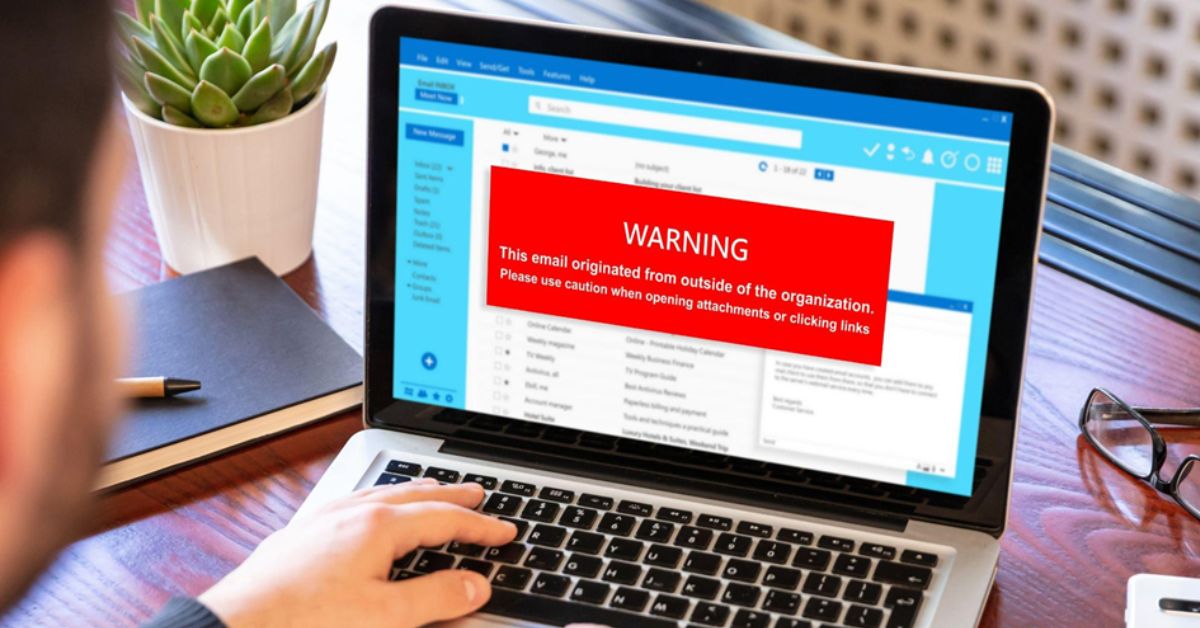Cybercriminals have been getting pretty creative with their email scams for a while now, and it’s becoming harder to spot the fake from the real deal. With the rise of sophisticated attacks, it’s no longer just a matter of deleting suspicious emails or being cautious with links. But when it comes to business email compromise (BEC) attacks, there’s something more at play than just your average phishing emails.
In this blog, we’ll delve into the world of email scams and explore what makes a BEC attack different than a typical phishing email. We’ll also equip you with the knowledge to stay safe online and avoid these costly scams.
What Is Phishing Exactly?
Phishing is a type of cybercrime where attackers use deception to trick victims into revealing overly sensitive information or performing certain actions that can compromise their security. This type of online scam is incredibly common, accounting for nearly 22% of all data breaches in 2023.
What Is a BEC Attack?
A business email compromise (BEC) attack is a type of phishing scam where attackers target businesses and organizations by impersonating high-level executives or other trusted individuals. In 2023, the frequency of BEC attacks more than doubled, with an average of 10.77 attacks per 1,000 mailboxes monthly—a 108% increase compared to 2022.
Key Differences Between BEC and Phishing
While both BEC and phishing attacks are forms of email-based fraud, there are some key differences between the two.
Target Audience
Phishing casts a wide net, targeting individual users to steal personal information like passwords, credit card details, or social security numbers. BEC, however, is aimed specifically at businesses and organizations, with the final goal of tricking employees into actions such as wiring money or sharing sensitive corporate data.
Tactics
Phishing relies on creating urgency or fear to persuade recipients into clicking malicious links or providing confidential information. BEC is far more deceptive, often impersonating high-ranking company officials to convince employees to perform illegal tasks, such as transferring funds to an illegitimate account.
Personalization and Sophistication
Phishing attempts are typically broad and less personalized, sent en masse to large groups. In contrast, BEC is highly targeted and involves the use of compromised email accounts, impersonation of trusted figures within a company, and creation of fake websites. This makes BEC attacks harder to detect and more complex, requiring a much higher level of technical aptitude.
Detection and Impact
Phishing emails can sometimes be easier to spot because of common red flags like spelling errors, suspicious links, or strange requests. BEC, being more tailored and carefully crafted, is harder to recognize and can have severe consequences, leading to significant financial loss or even the compromise of entire businesses.
Understanding these differences is crucial for strengthening your defenses and recognizing the unique tactics attackers use in both phishing and BEC schemes.
How to Protect Yourself from BEC and Phishing Attacks
Staying safe from email-based attacks like BEC and phishing requires vigilance and a proactive approach. Here are some key strategies to protect yourself:
Use Email Lookup Tools
Before responding to suspicious emails, use an email lookup site to verify the sender’s identity. These tools can help you confirm if the email address is legitimate or linked to known fraud. By catching impersonation attempts early, you can avoid falling victim to scams.
Enable Multi-Factor Authentication (MFA)
Implementing MFA adds an extra layer of protection by requiring two forms of authentication before granting access. This makes it harder for attackers to gain control of accounts, even if they’ve stolen your login credentials.
Be Cautious with Links and Attachments
Always double-check any links or attachments before clicking. Hover over links to reveal the actual URL, and only download attachments from trusted sources. Phishing attacks often disguise malicious links or files to trick you into compromising your system.
Train Employees and Regularly Update Security Policies
Educate your team on recognizing common phishing and BEC tactics. Regular training sessions can increase awareness and help employees stay alert for red flags. Updating security policies to address emerging threats is also essential.
Verify Requests Manually
If you receive an email requesting sensitive actions, like transferring funds or sharing confidential information, always verify the request through a different communication channel. Calling the sender directly or using internal messaging platforms can help ensure authenticity.
By implementing these strategies, you can significantly reduce the risk of falling victim to both phishing and BEC attacks, keeping your personal and business information secure.
Stay One Step Ahead of Scammers
Protecting yourself from email scams doesn’t have to be overwhelming. With the right tools, awareness, and a bit of caution, you can safeguard your personal and business information from potential threats.
Stay informed and stay alert. It’s the best way to safeguard your interests.











